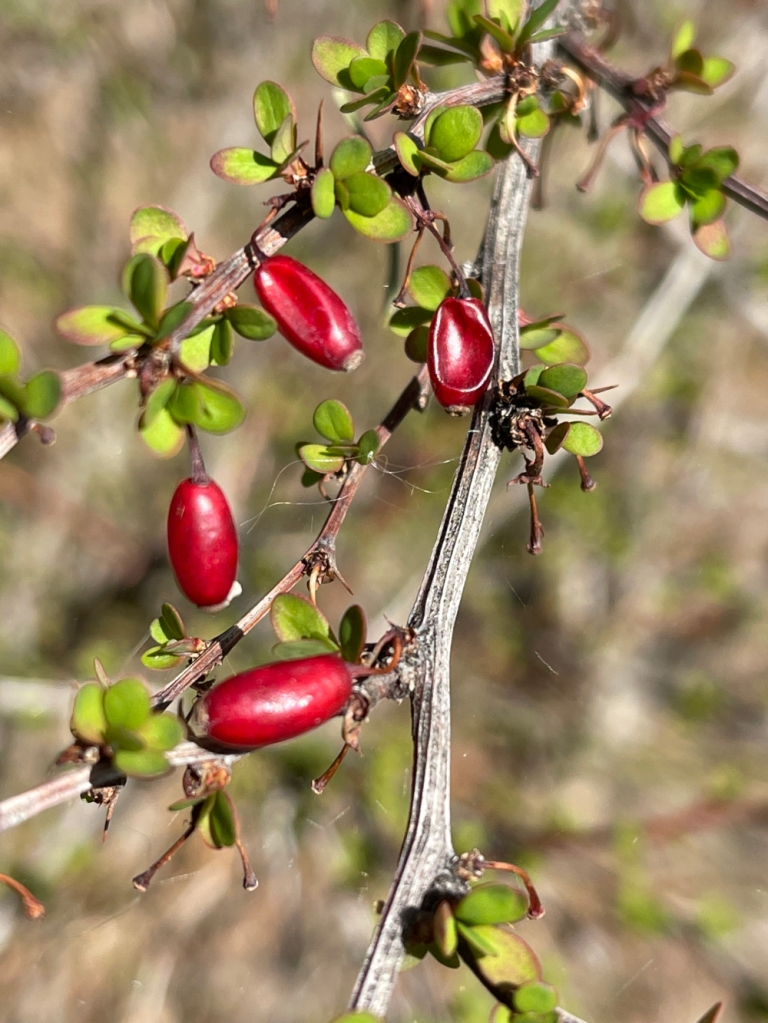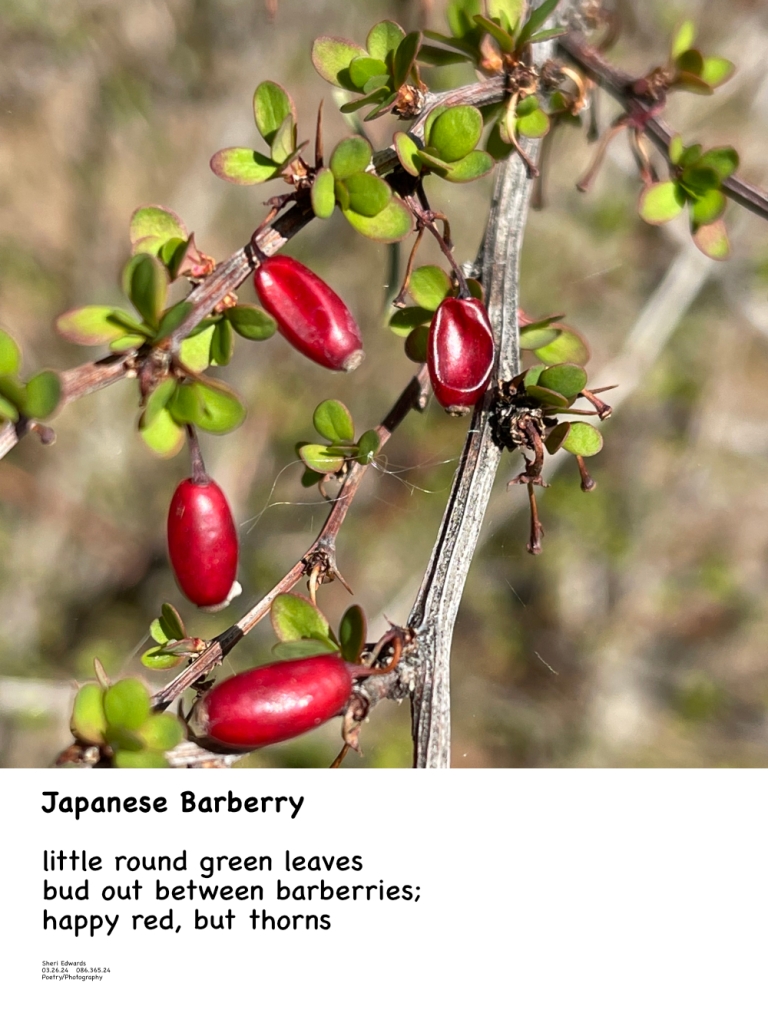
Daily Note
Every day, a photograph, a poem. On March 29, 2022, in Cole Park I snapped this photo of the lovely red berries / seeds on this freshly budding bush which will soon have little yellow flowers on it. I found it today in my photos for a poem.
I love discovering the colors of spring. I love the bright red here, illuminated by the spring sun into a sparkling dash of brilliance. I also love the light green of the round, spatula shaped leaves that bring out the red even more as they, too, seem to shine beneath the sun.
I did not notice until today the thorns and the grooved stem. The combination of red berries, rounded leaves, thorns, and grooved stem identify this bush as Japanese Barberry. Because it is often considered an invasive species and is not native, it was probably not planted when the park was built in the 1930s by the Civil Conservation Corps during the construction of Grand Coulee Dam. Coulee Dam was “engineer’s town,” and owned/managed by the Bureau of Reclamation. The CCCs developed most of the landscape on the west side of Coulee Dam, where I live:
“The unsightly undeveloped tract north of Fiddle Creek (in Government townsite of Coulee Dam) has been transformed into a beautifully landscaped up-to-date recreational area whose benefits to the Government employees will be reflected in better health and morale during the years of active construction, and afterwards during the period of operation and maintenance” (memo 1938).
[ The Bureau of Reclamation’s Civilian Conservation Corps Legacy: 1933-1942; p. A-213]
[Camp BR-48] Enrollees planted over 15,000 trees, constructed over 3,000 linear feet of walks and 9 miles of roads, landscaped about 60 acres of grounds, and prepared 33,875 square yards of parking areas. They laid over 5,500 feet of pipeline, built 4,700 linear feet of diversion ditches to prevent soil erosion, and placed over 2,000 square yards of rock riprap for bank protection. Work crews also cleared brush and other growth from some 240 acres of the reservoir area immediately above the dam. The development of a community recreation area comprised one of the major enhancements contributed by CCC forces. Facilities constructed included a swimming pool equipped with diving boards, bath house, and restrooms; a wading pool; two tennis courts; a softball field and handball court; and a picnic area. CCC forces completed the majority of the improvements, such as rough formwork, and the pouring and curing of concrete. Skilled labor performed the necessary plumbing and pipe fitting, and fence and chlorinator house construction. The installation of floodlights enabled park use to extend into the evening.
[ The Bureau of Reclamation’s Civilian Conservation Corps Legacy: 1933-1942; p. A-212-213]
The area is rich in history, both Native American and United States. Although the BR-48 CCC Camp was from North Dakota, I don’t think my dad was in that crew; he would have mentioned it when I moved here.
So here a boom was happening after The Great Depression, when the public works programs put people back to work, much like President Biden has done with his Bipartisan Infrastructure Act. There are thorns to deal with, but the benefits far outweigh the detractors.
And this non-native bush, though thorny, brings bright berries that add a richness of spring color to the dull of winter.
Poetry
Japanese Barberry
little round green leaves
bud out between barberries;
happy red, but thornsSheri Edwards
03.26.24 086.365.24
Poetry/Photography

~~~
Japanese Barberry, considered invasive & non-native, contrasts with the historical landscape created by the Civilian Conservation Corps
#smallpoems #clmooc #poetry24 #barberry #haiku #thorns #civilconservationcorps











